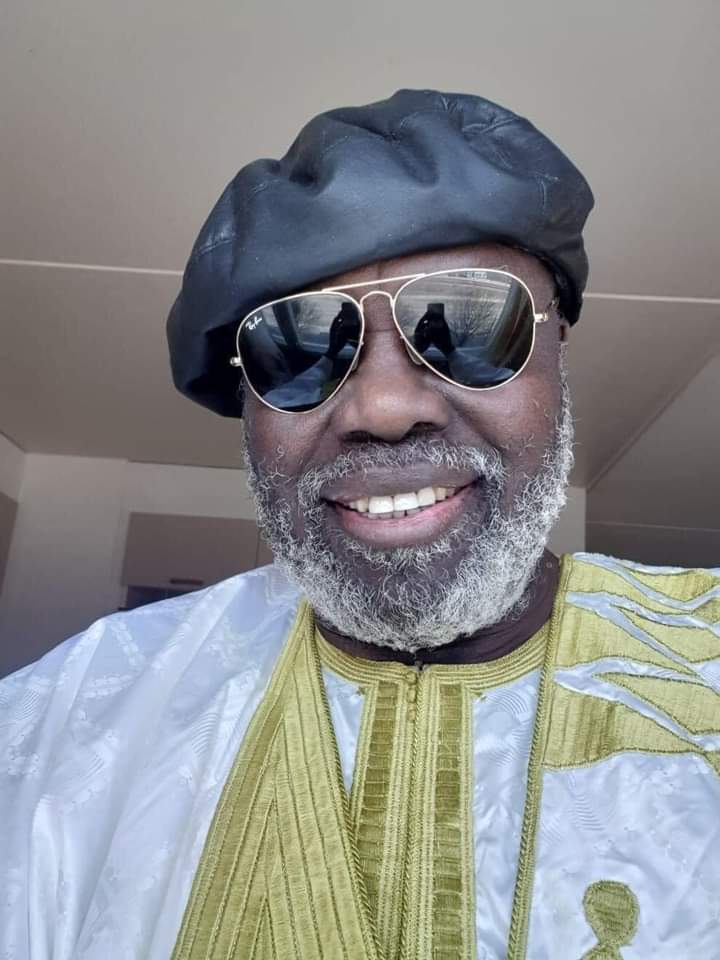Lafia, the birth place of Maba and the town of Nioro in Rip are said to be part of Baddibu. His family is Fulani and originated from the Deyangkobeh, who had inhabited a region in Baddibu. The whole area of course was redistricted by the colonialists many times over since 1815, when the congress of Vienna gave France exclusive rights over Senegal. By the 1850’s and 1860’s the French had extended their control into the interior of Senegambia, and by 1895; Senegal and The Gambia were established as colonies with permanent borders. The French went further by making Senegal the headquarters for the government of West Africa. Up to today, along the border some villages had lines drawn in the centre of the village -Francaise/Anglais, but villagers go on about their business on both sides as it suits them, especially the peasants and farmers.
Maba built Nioro as his main capital, and Baddibu lost more territory and ground, with the British and French moving artificial boundary and demarcation lines. After the death of Maba, his ex-colonels and comrades in arms took up what was left of Saloum and Baddibu. Jatta Selling Jammeh took over as ruler of Baddibu, and note that there was no upper or lower Baddibu. That came later on in the beginning of the twentieth century, in the era of the late Tamba Jammeh of Illiassa.
Then you have Sait Kani Ture (Touray), who became ruler of Sabach, who also built a fort at Kataba. Ngoyan became Medina Saba, also known as a cultural center, getting inspiration from Balanghar’s leadership of the Ture’s and Sise’s.
And finally, Gumbo Gaye became leader of Sanjal, and also built a fort at Ngeyen Sanjal. The ties of Rip is deeply infused.
All these leaders, along with some Ceesay leaders of Saloum Pakaala, etc. all share some family cultural ties and lineages.
The colonial legacy has left many things changed. The surname Touray or Ture is Wollof in Saloum, Serere in Sine Saloum, and Mandingka in Mali, Gambia, Guinea, etc.Ceesay in Saloum is Wollof, and Mandinka in Mali, Gambia, Bissau, Djula in Ivory Coast, in Burkinabe, Krio in Sierra Leone, etc. Many things changed, so do cultural ties, ethnicity, etc.etc.
Finally, you noted that Maba was defeated in kiang Kwenilla, that is true from what I heard. Maba and his forces have won some battles and lost some; like all political /religious battles. But Maba’s wars have been fought mostly in the North bank of the River Gambia, namely Baddibu, Niani, Saloum, Sine Saloum, Baol, and Cayor. His allies like Foday kaba Dumbuya, were the ones to intensify the marabou Soninke wars in the South Bank of the river Gambia; all the way to Cassamance and further. I hope that helps answer your questions. Thank you.
Ends





Maxs
Mr Sainey Faye , thanks for your historical explanation of maba legacy and the war in baddibu. I have always been interested to learn about Gambia history especially pre-independent and tribal integration has successfully help to stabilize our country. Though I am not A historian , as an outsider , I have seen a big grave yard called ” Taatowoo” in mandinka in one of the village in the north bank during many of my trips in that part of the country in the first republic . The villagers stated that Taatowoo was as a result of maba war . It really fascinated me at the time because I was from part of the country where I have never seen or heard of such things . Could you please elaborate on this Taatowoo ( big grave yard) which is almost a size of three compounds put together ? Thanks .
Lafia Touray la Manju
Sainey, thank you ever so much. You have satisfied my curiosity over this issue now. I now understand that Rip is not in modern day baddibu. It was said that Maba also built an alliance among all the tribes in Baddibu and saloum and all the tribes in these regions fought in his army.
I also understand that Kataba in sabach later fall onto the Saballys who are the descendants of the King of Kataba in Naini, who lost his territory to a rival king in Naini. Their original surname is said to be “camera” but changed to “Sabally” after an incident involving one of their fore bearers who was said to have gone missing at sea for so long that everybody thought he was dead. So when he was later found alive, he was referred to as “Sabally” which means in mandinka; “never die”. Hence, the surname “Sabally”.
And yes, Maba mainly fought in the north. In Baddibu, a lot of people fled to kiang to seek refuge. So the kiang Nyanchos and KORINGOS saw this as a potential threat. So they contemplate on attacking Maba but before they could offer anything, Maba attacked from around Tendaba Area. The Nyanchos and Koringos quickly assembled in Kwenilla where they met Maba and defeated his army there. Maba then retreated to Baddibu where he re-build his army and then moved on to attack jollof and elsewhere.
I am always inspired by Sainey Faye.
Thanks